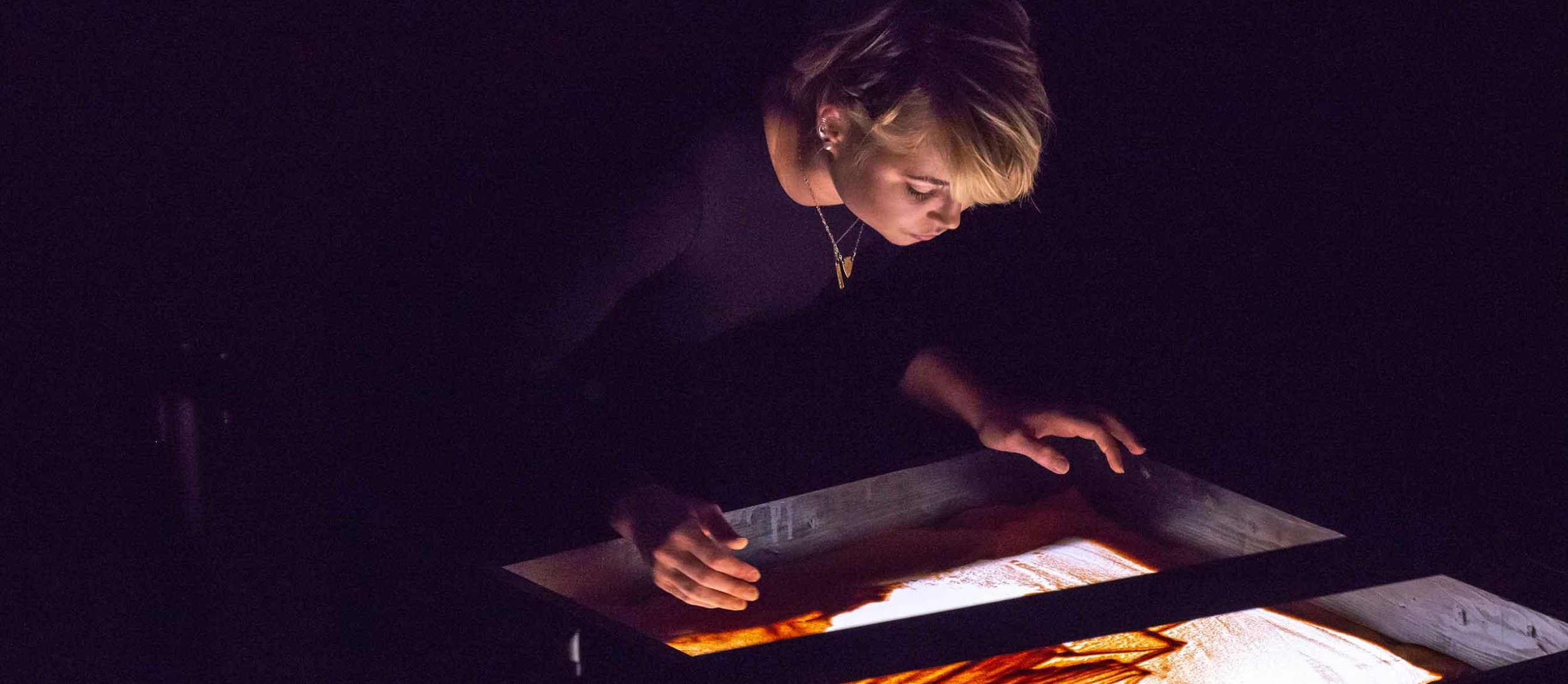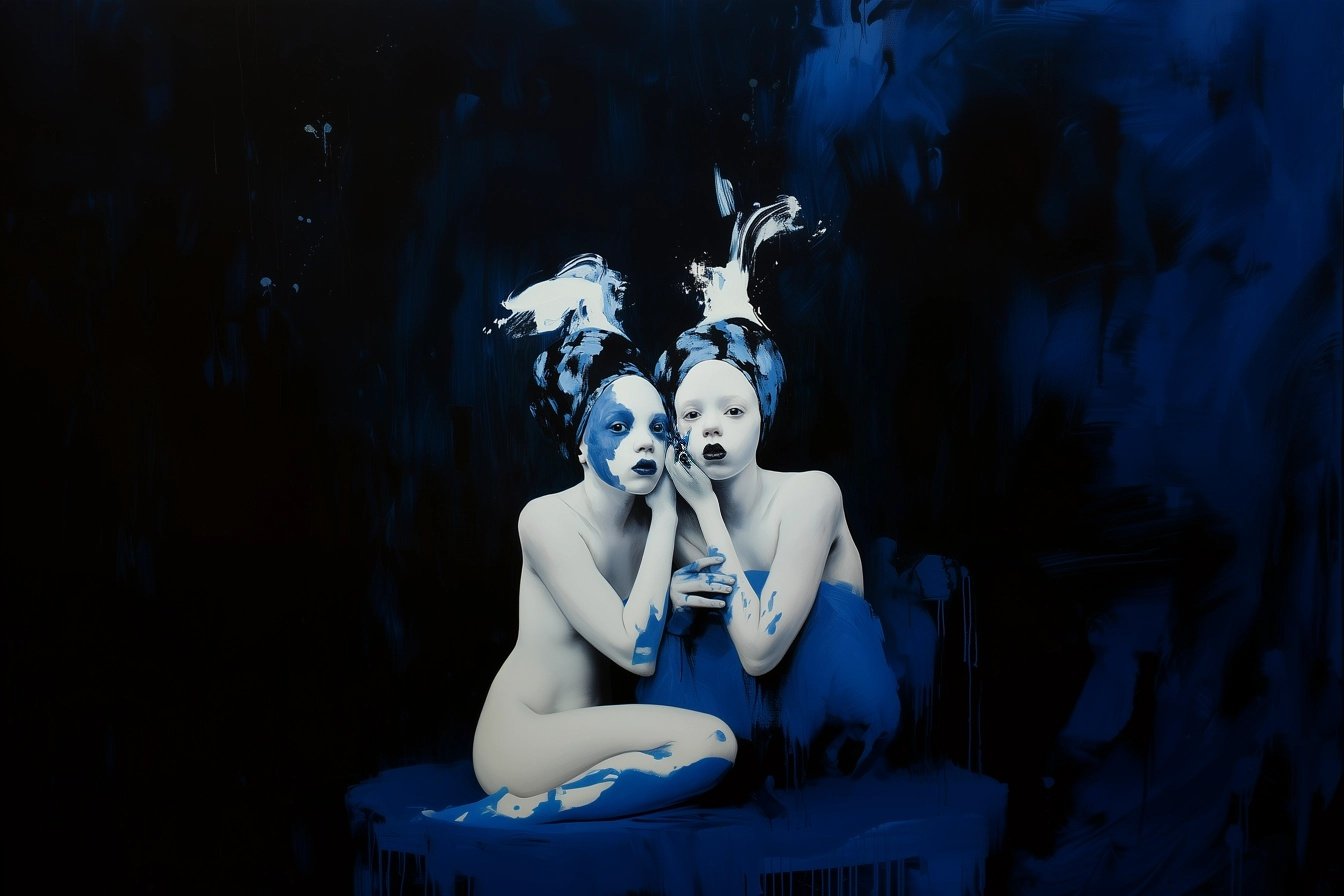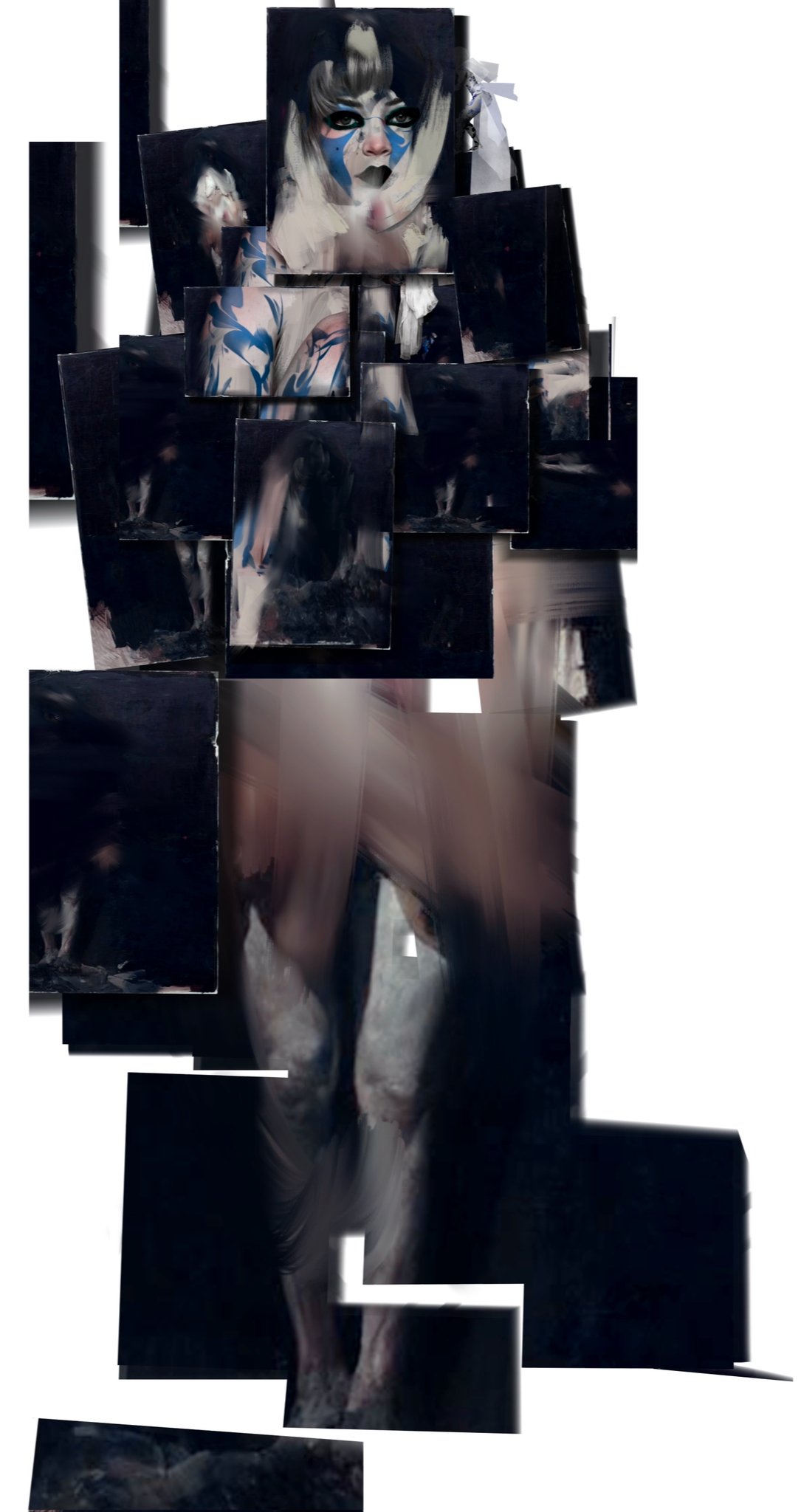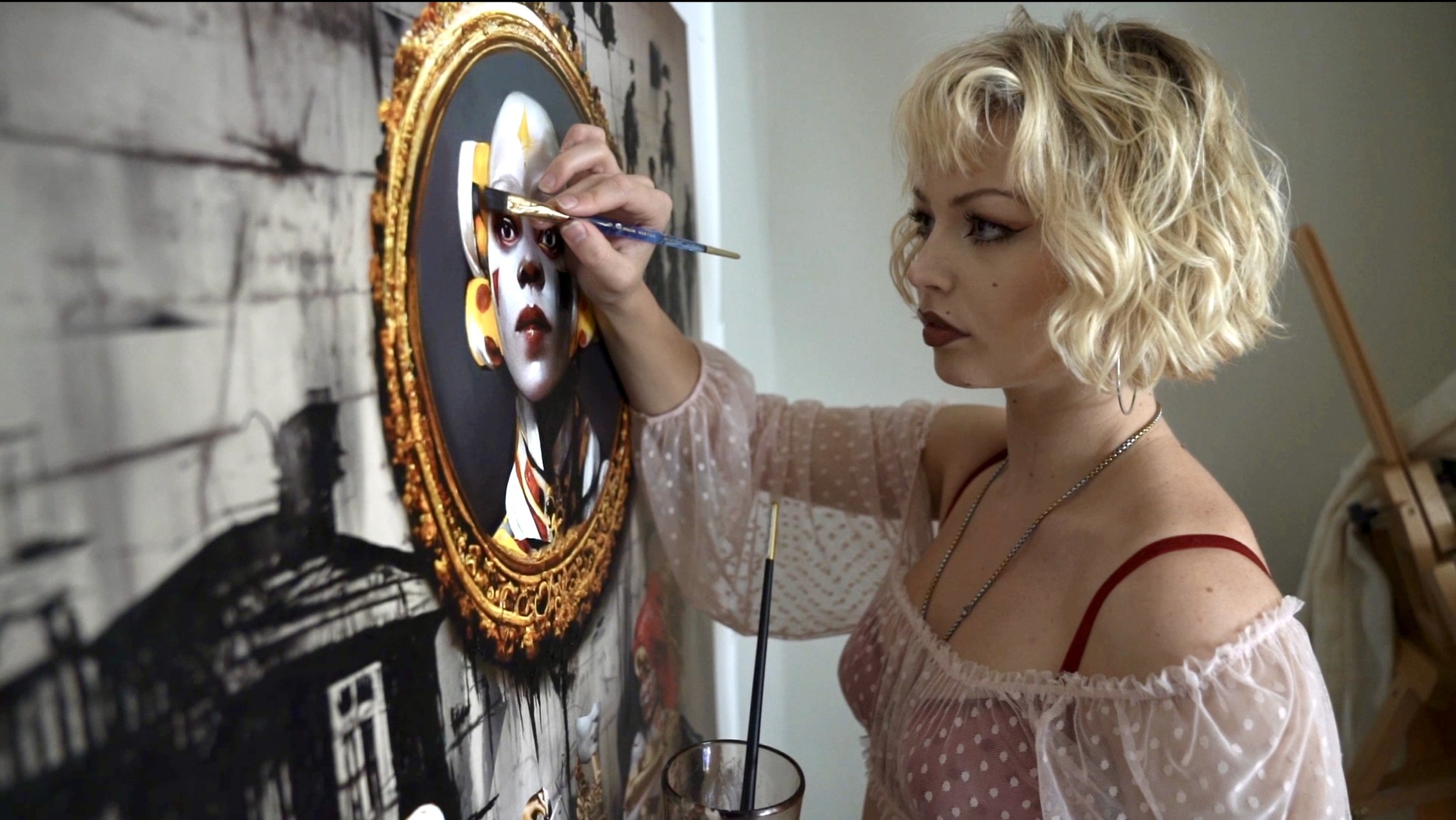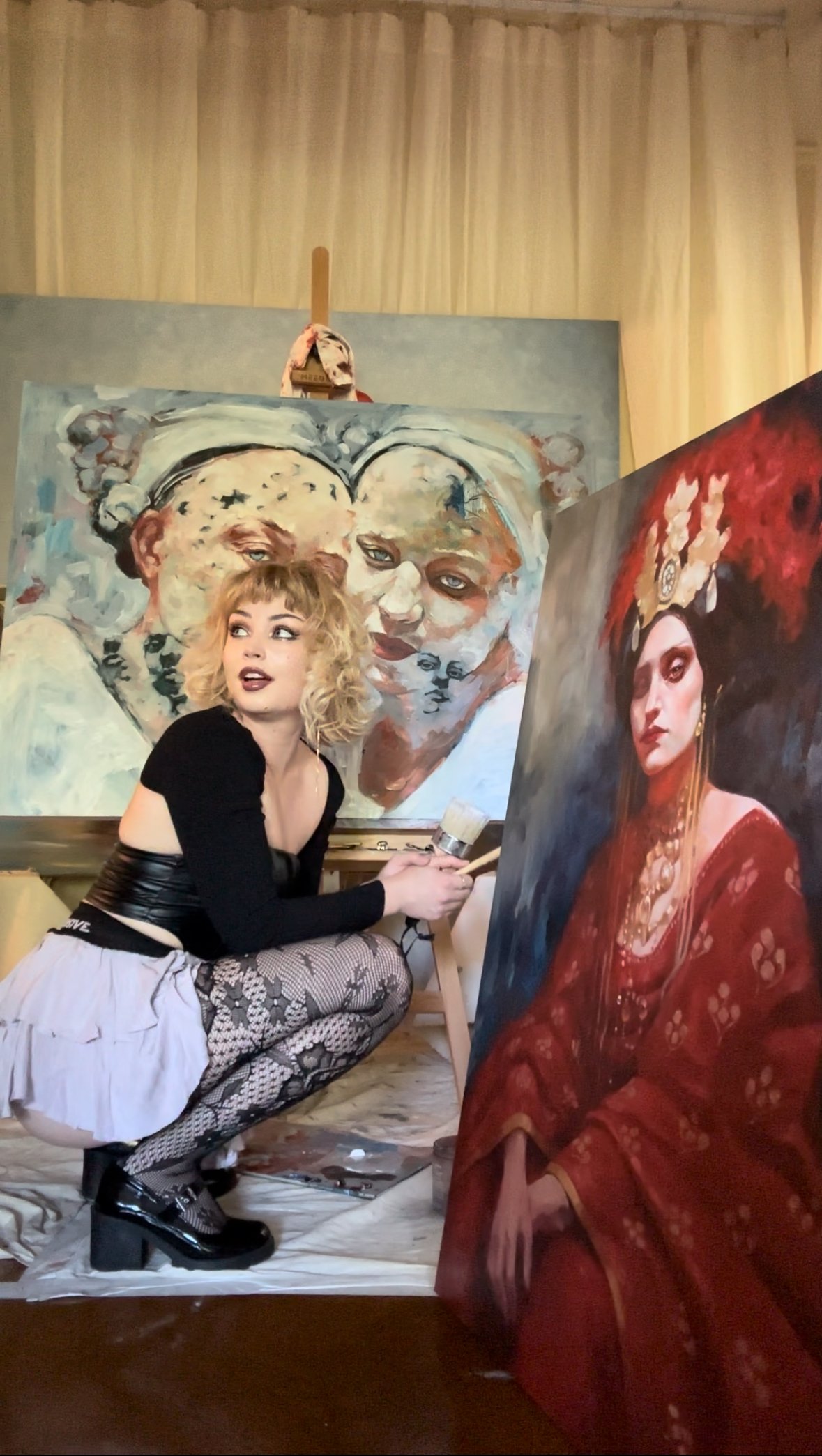Dasha Bough
Bio
Dasha Bough is an American film director, animator, and animation production consultant. She studied classical oil painting, etching, and drawing at the Repin Academy of Art, before receiving concurrent BA and MA degrees at Harvard University. At Harvard, Bough received her BA in Slavic Languages and Literatures + Visual and Environmental Studies. She completed her MA degree in Russian, Eastern European, and Central Asian Regional Studies.
Bough is best known for her 2017 TEDx sand art performance, her illustration work for the Emmy nominated series Mrs. America (Hulu FX) and blockbuster Godzilla vs. Kong, and her 2022 animated feature documentary “The Conspiracy” – a documentary about the history of conspiracy theory and antisemitism. Her most recent short film “Now I Am Old and Do Not Need the Moon” is now playing in festivals globally. Bough is currently editing her latest film “Sunflower”– a feature length documentary which comes as a sequel to “Now I Am Old and Do Not Need the Moon”, and which centers on a 5-generation household of Roma women in the village of Ursari, Moldova.
Today, Bough’s artistic practice includes the following mediums: etching, oil painting, ceramic sculpture (porcelain), silk screen printing, charcoal and graphite drawing, sand animation, stop motion animation, charcoal animation, 3D animation, and 16mm film (shooting on Bolex and Aaton cameras).
While directing animation for the feature doc “The Conspiracy” (which premiered in 2022 and is now touring internationally) , Bough developed a novel animation pipeline designed to make animation a feasible option for independent film studios with smaller budgets. Since moving back to New York, Bough has resumed work on this animation pipeline — testing and incorporating into her pipeline the newest generative and corrective ai animation software. An early adopter and pioneer of ai animation tools, Bough now works as a consultant with production house, animation companies, and independent documentary productions to customize and optimize their animation pipelines.
Bough during a sand animation performance in Cambridge, 2018.
Bio (from the heart)
I‘m a fourth generation Montana girl, and I was lucky enough to spend my upbringing between Montana and Russia. Both of these disparate worlds have had a massive impact on my personality (for better or worse). They are also the two worlds which continue to mystify me to this day… My art practice (from doc films to sand art performances to strange little etchings) has largely just been an imperfect, exhausting, thrilling attempt to understand these two worlds.
To this end, I have spent most of the last 2 years living and filming in a small Romani village in rural Moldova. What started as a documentary about a village of young girls, factory women, and babushki has become something bigger and more wonderfully unwieldy. I found that the personalities of the women of Ursari (who have become little sisters, mothers, and babushkas to me) cannot be adequately described in just the documentary format. This realization was the impetus for a new project — temporarily called “Dusharovka”.
The new project, Republic of Dusharovka
This is a scene from Dasha Bough's fictional "Republic of Dusharovka". This animated scene was created in September of 2024 using a pipeline Bough developed in 2020 for the feature animated film "The Conspiracy". Bough's animation workflow starts with her oil paintings, and utilizes the following technologies: 3D animation (sculpting in Blender, character animation in iClone and the Reallusion suite), motion capture (using Rococo software and working with a third party company and actors), EbSynth (pixel tracking software used to retexture 3D animated scenes, archival footage, and 2D cel animation), Midjourney (generative ai using a model trained on Bough's oil paintings and photos of her likeness), a Digital Diffusion model (also trained on Bough's oil paintings, photos of her sculptures, and photos of her likeness), Procreate (a digital editing and drawing software akin to Photoshop), Kling Ai (a generative text to video and image to video ai software), and Adobe Premiere (for compositing animation, editing, and sound design).
The Incomplete History of the Fictional Republic of Dusharovka
When an empire crumbles in the real world, the suddenly obsolete relics, societal structures, and ideas of that empire are unceremoniously dumped into a wasteland in a parallel world. From these forsaken leftovers, a new and strange society is built. The Republic of Dusharovka is one such society. It was formed from the toxic ashes of the Soviet Union when it collapsed in 1991. This wasteland world (the one in which the Republic of Dusharovka exists) is not a mirror of our world. It is, rather, more of a dumping ground for the conceptual and physical ruins of fallen empires.
An incomplete inventory of physical items dropped in the wasteland after the fall of the USSR:
Soviet pools with Soviet mosaic tile walls
5000 Stalin statues, Lenin statues
Factories — bread, sausage, steel, paint, pigment
Cigarettes, soviet ice cream
Children’s animations with encrypted political messaging
Nuclear testing sites
An incomplete inventory of conceptual waste dropped in the wasteland after the fall of the USSR:
A mangled unflinching Communism
Sense of purpose, egalitarian collectivism
High status of poetry
An incomplete inventory of auditory waste dropped in the wasteland after the fall of the USSR:
The pop music of Alla Pugacheva
A propensity for anthems, war songs, ballads
The intro chime of the USSR radio channel 1
It is important to note. It was not only the physical and conceptual which were dumped into the wasteland world in 1991… The souls of all those who had only ever lived in the USSR were also deposited there, and given bodies and lives that resembled their real lives in the real world.
It is now 2191 in the Republic of Dusharovka. Many generations have come and gone. There have been no significant technological leaps in the 200 year history of Dusharovka. That, however, is not surprising given that they only had at their disposal those ideas and technologies which belonged solely to the Soviet era and which were deemed too old-fashioned to bring into the post-soviet era. Additionally, the Republic of Dusharovka is hobbled by many of the same constraints that characterized the USSR.
Some critical facts about Dusharovka today:
The society is made up almost entirely of women. This is the legacy of one of the earliest Ministers of Culture (the most powerful position in Dusharovka) who introduced a medication that incrementally decreased the likelihood of birthing male children. This medication was mass produced, and quickly became mandatory for 80% of the population. The 20% of the population not on this medication (Castropol) are women who are specifically chosen for the task of birthing male babies. These women are chosen for their stern, disciplinarian tendencies as well as genetic diversity (in relation to each other). To penalize and discourage any skipping of medication, there is a tax imposed on any woman who gives birth to an unsanctioned male child. The male children are raised in a compound that is removed from normal society.
90 years into the 200 year history of Dusharovka, a tyrannical Minister of Culture gave rise to a strange social development. Yelena Vladimirovna was the Minister of Culture. She was married to the party Premier (head of state), Leonida Igorovna, and wielded unprecedented power as Minister of Culture. Minister Vladimirovna was widely known to be a jealous, punishing figure. Before her marriage to Premier Igorovna and her appointment to the Ministry of Culture, Vladimirovna had been a movie star. During her short career on the silver screen, however, she failed to achieve the level of success she thought herself worthy of. She was constantly relegated to the supporting role. She was a beautiful woman, and her relegation to supporting role was not immediately obvious. It was widely believed by the public to be because of the still evident remnants of her unrefined rural accent. During her acting years, Vladimirovna kept a secret, painstakingly detailed journal to document each time she was snubbed in the film industry. When she came to power a decade after her last underwhelming film appearance, Vladimirovna began exacting her revenge on the film industry. She started with secret trials and executions of every casting director who did not place her in a lead role. Then she moved on to directors, critics, etc. Her crusade ended with the imprisonment of her costar, Laura, from the last film she ever performed in. The trial of Laura was public. She was tried as an enemy of the people. Laura was at that time the most beloved actress in the history of Dusharovka. Her admirers were numerous, and they were fervent. On the final day of the trial, the unsurprising verdict was delivered to the public: Guilty on all charges. As Vladimirovna (then still respected and feared, if not loved) was leaving the courthouse, a young girl ran up to her — a crazed terrified look in her small beady eyes. Before Vladimirovna could react, the girl had emptied a cup full of acid on her unsuspecting face. The concoction burned Vladimirovna’s fine skin — sparing only her eyesight. This was a mercy that she was never fully appreciative of, often lamenting that she wished “it would have been better to go blind than to have to see her scarred face even once”. This incident set off a dark period of Dusharovka’s history now known as “The White Lead Purges”. The “White Lead Purges” (2090 - 2100) period was followed by a period called “The Latex Decades”, (2100 - 2300) which was followed by the period that Dusharkovka is now in: “The Age of White and Blue”.
Dive into the visual world of the Republic of Dusharovka here :

